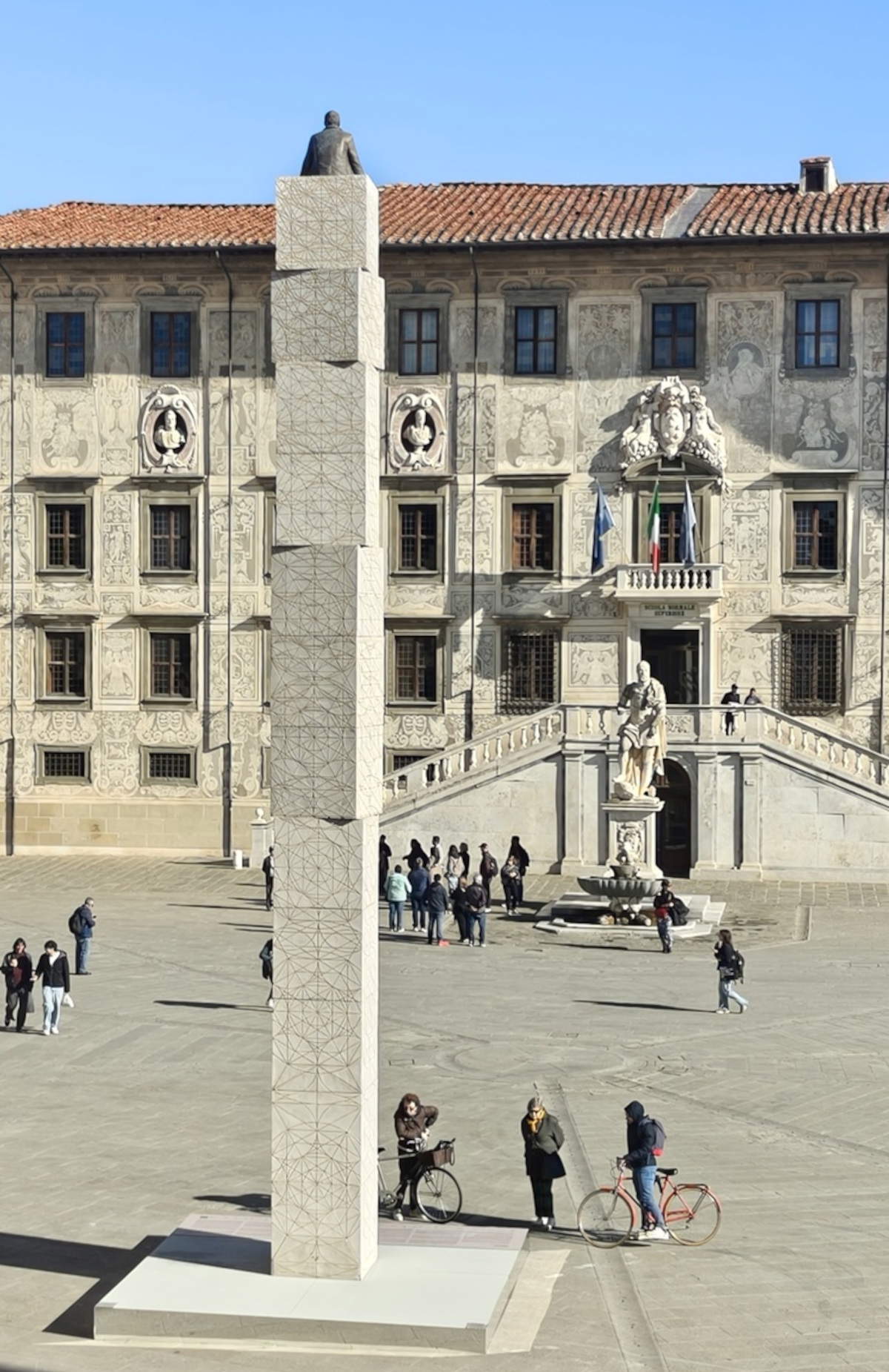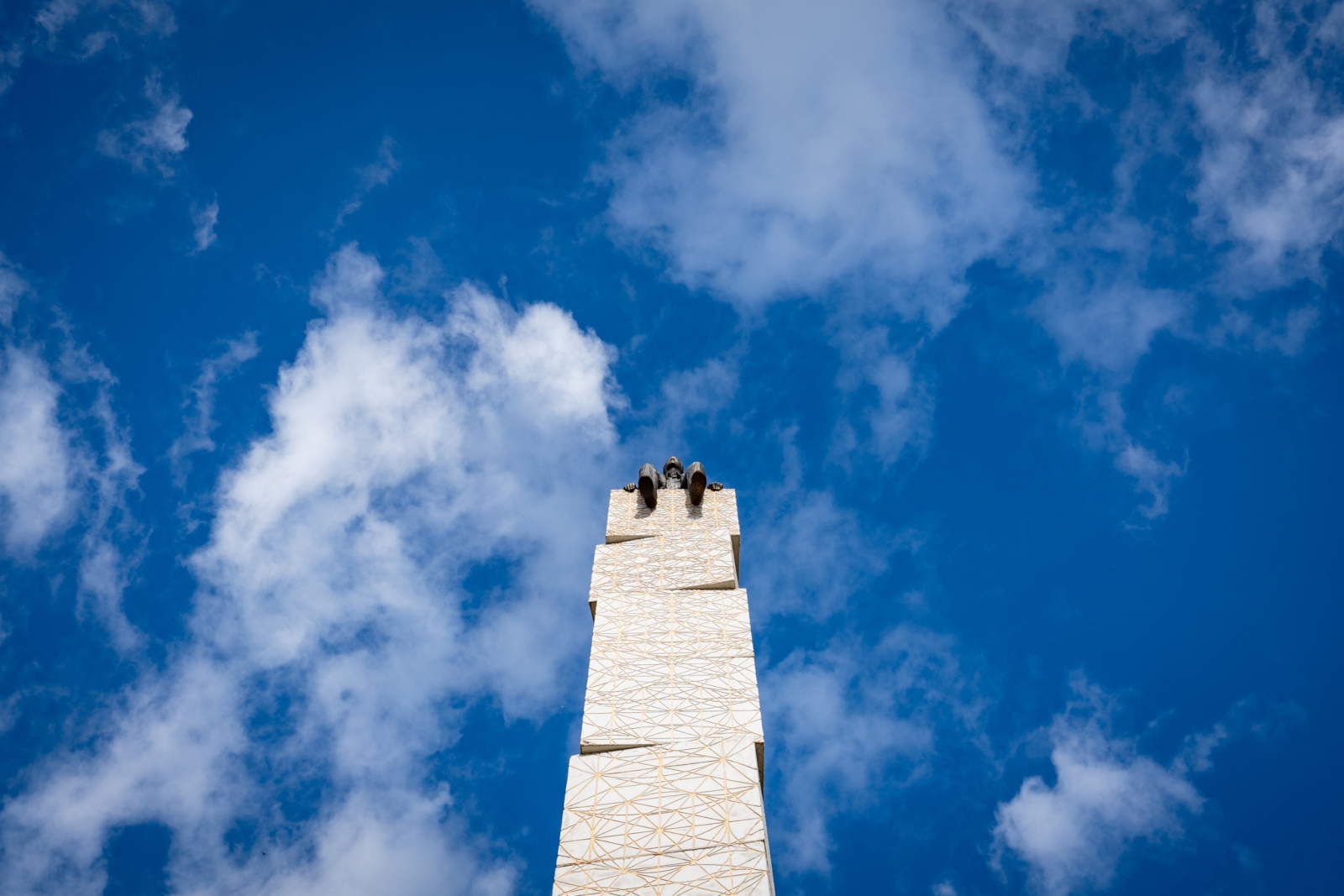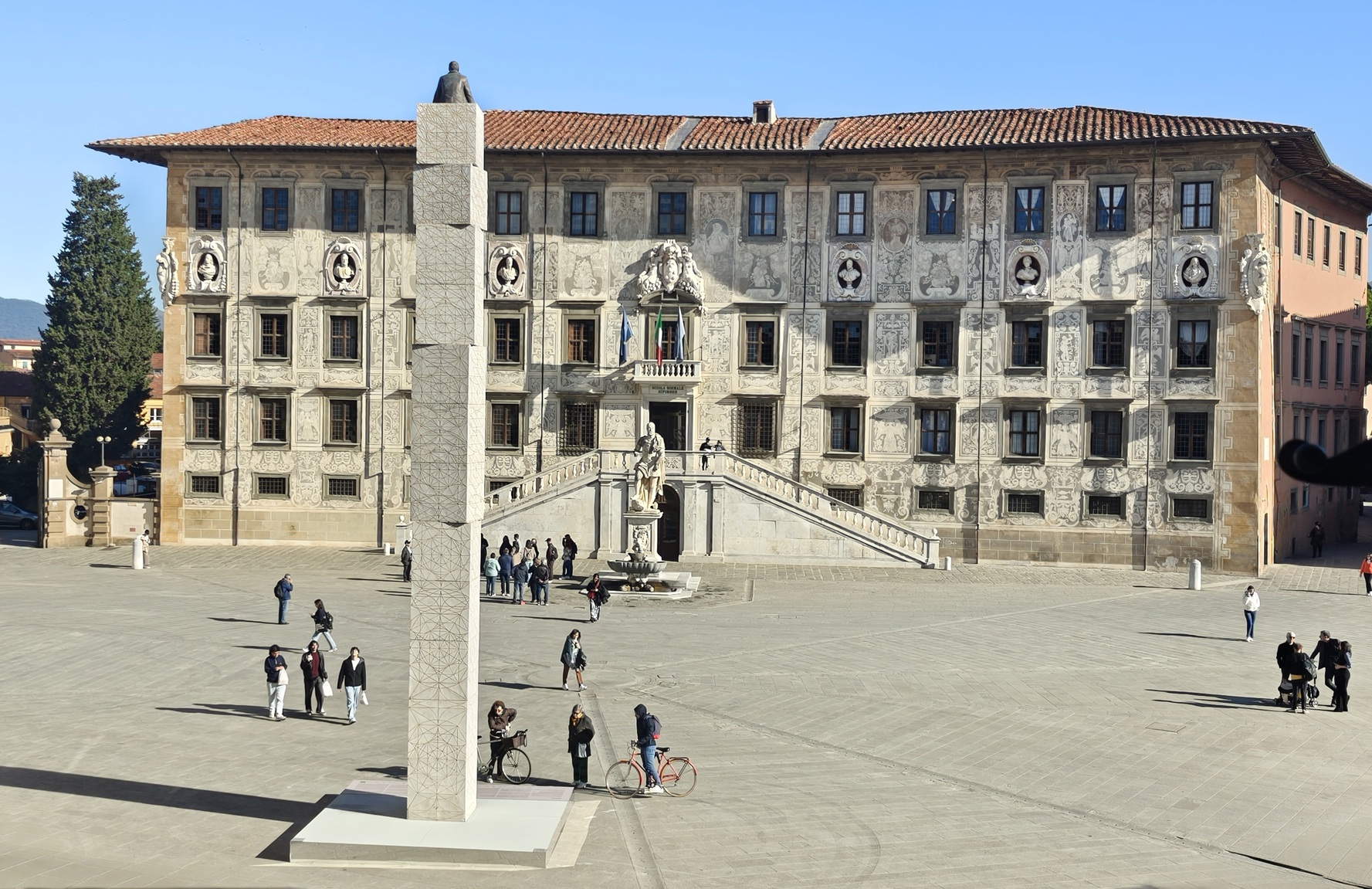Thirteen meters high, OPERAE is Gianni Lucchesi ’s monumental sculptural tower that can be seen from November 5 to 25, 2025, in Piazza dei Cavalieri in Pisa, in front of the Scuola Normale Superiore. The choice of location is not random: Pisa is the birthplace of Leonardo Fibonacci, the mathematician who in 1202 introduced Arabic numerals to the West and the famous sequence that bears his name, a progression found in many natural phenomena, from the spirals of shells and sunflowers to the structures of galaxies. Precisely during Fibonacci Days (Nov. 21-24), OPERAE symbolically returns “home,” after stops in Milan (Fuorisalone 2023) and Genoa (Piazza De Ferrari 2023), thanks in part to the contribution of the City of Pisa.
The work consists of twelve concrete cubes, suspended in a rotation that follows the Fibonacci progression - 1, 1, 2, 3, 5... - until culminating in the life-size human figure placed on top. Sitting serenely, gazing toward the horizon, the figure represents man resting on his own history - made up of intellect, culture, science and philosophy - but continuing to look beyond, toward that dimension in which certainties dissolve and every possibility opens up.
Imprinted on the tower’s surface in gold are Giordano Bruno’s hermetic seals, two-dimensional projections of the five Platonic solids - tetrahedron, cube, octahedron, icosahedron and dodecahedron - symbols of that sacred geometry that Plato considered the divine foundations of the universe. Bruno collected them in his “Seal of Venus,” an emblem of the cosmos and knowledge.
Opposite the Palazzo della Carovana, home of the Scuola Normale, OPERAE finds an ideal resonance in the famous Vasarian graffiti that decorates its facade. The gilding of the Brunian seals and Vasari’s drawings share the same symbolic intent: allegories of knowledge, mythological figures, zodiac signs that offer themselves as languages to be deciphered. Both surfaces-the Renaissance one of the palace and the contemporary one of the sculpture-are presented as texts to be read, maps of an encrypted knowledge. It is a dialogue between two epochs, a play of mirrors between the horizontal facade of political-scientific power and the vertical ascent toward philosophical infinity.
OPERAE is a disassemblable, composable and nomadic work. Like the Fibonacci sequence that reproduces itself endlessly, it can travel, transform and be reborn in ever new contexts: from the Lombard metropolis to the Ligurian port to the heart of Tuscany.


"OPERAE is a mathematical easter egg," explains Federico Poloni, professor of Numerical Analysis at the University of Pisa, who spoke at the press conference inaugurating OPERAE in Pisa. “Like Dürer’s engravings or Escher’s impossibilities,” Poloni continues, “this tower also hides references that mathematicians recognize and appreciate: a discreet homage to the intrinsic beauty of numbers, that fascination that Fibonacci was able to popularize with elegant and popular exercises.” In the age of artificial intelligence, OPERAE poses a crucial theme: just asAI is born from algorithms, yet generates language and images through processes that elude full comprehension, so the golden section governs natural forms with an ironclad yet mysterious logic.
Carlo Alberto Arzelà, an architect who spoke at the presentation, noted how the golden ratio spans millennia: “from the Parthenon to Palladio, to Santiago Calatrava’s algorithms and parametric architecture: a constant that unites classical temples and contemporary structures, demonstrating that certain proportions speak a universal language.” “And so,” Arzelà continues, "just as theories about the origin of the universe change our perspective, Gianni Lucchesi invites us to sit on our culture knowing that as we look toward the event horizon everything could be challenged.
The project is supported by the City of Pisa and in collaboration with the Scuola Normale Superiore di Pisa, theUniversity of Pisa, the Scuola Superiore Sant’Anna and theState Archives.
 |
| Pisa, a thirteen-meter tower pops up in Piazza dei Cavalieri: it's OPERAE by Gianni Lucchesi |
Warning: the translation into English of the original Italian article was created using automatic tools. We undertake to review all articles, but we do not guarantee the total absence of inaccuracies in the translation due to the program. You can find the original by clicking on the ITA button. If you find any mistake,please contact us.